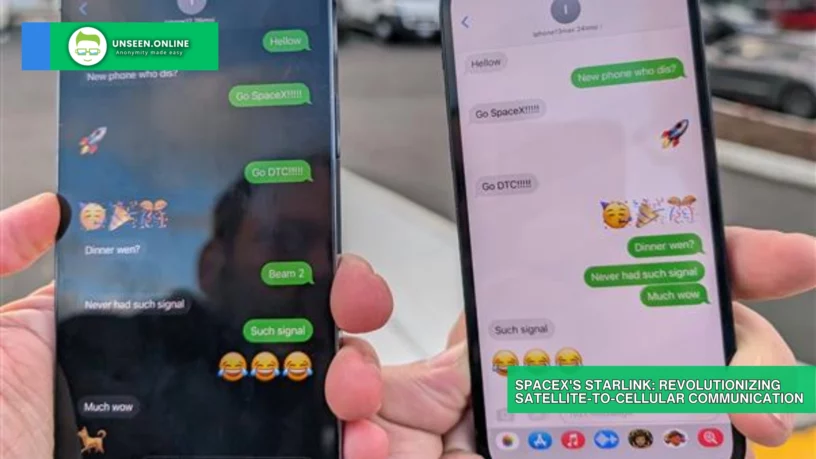In a groundbreaking development, SpaceX’s Starlink has achieved a new milestone in satellite communications by successfully enabling text messaging between smartphones. This breakthrough comes shortly after the deployment of six innovative Starlink satellites, demonstrating the potential of space-based cell towers. Within a week of their launch, these satellites facilitated text exchanges via unmodified cell phones on Earth, using T-Mobile’s network spectrum.
The recent test involved two iPhones communicating through Starlink’s satellite connection. Despite a minor glitch with one undelivered message, the experiment was largely successful, highlighting SpaceX’s ability to bridge the gap in satellite-to-cellular communication. The technical challenges were significant, as consumer smartphones typically have low gain antennas, not designed for satellite interaction. SpaceX overcame this by outfitting some Starlink satellites with bespoke silicon and advanced phased arrays to enhance communication with terrestrial phones.
The Starlink satellites, orbiting approximately 340 miles above Earth at 17,000 miles per hour, faced challenges in maintaining stable communication links. SpaceX’s solution involved intricate engineering to mimic a stationary cell tower in space, focusing on satellite altitudes and beam placements to ensure reliable LTE connections.
SpaceX’s future goals are ambitious, aiming to extend this technology to include voice and data services by 2025. The company has received FCC approval for initial tests in over two dozen locations using a fleet of 840 satellites. Full commercial operation in the U.S., however, is contingent on further FCC approval, with radio interference being a crucial consideration.
This innovation by SpaceX is poised to revolutionize global connectivity, offering a glimpse into a future where seamless communication links are possible from the furthest reaches of space to our handheld devices.







